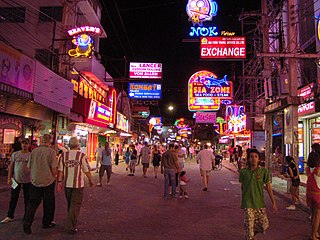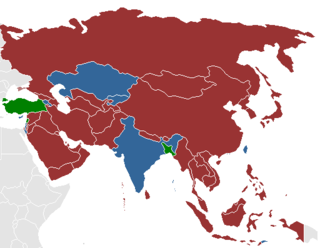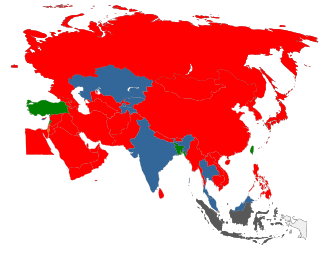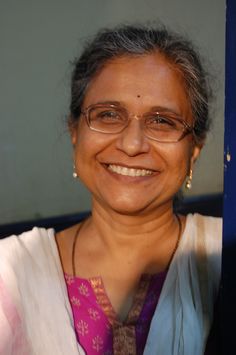Child prostitution is prostitution involving a child, and it is a form of commercial sexual exploitation of children. The term normally refers to prostitution of a minor, or person under the legal age of consent. In most jurisdictions, child prostitution is illegal as part of general prohibition on prostitution.

Prostitution in Thailand is not itself illegal, but public solicitation for prostitution is prohibited if it is carried out "openly and shamelessly" or "causes nuisance to the public". Due to police corruption and an economic reliance on prostitution dating back to the Vietnam War, it remains a significant presence in the country. It results from poverty, low levels of education and a lack of employment in rural areas. Prostitutes mostly come from the northeastern (Isan) region of Thailand, from ethnic minorities or from neighbouring countries, especially Cambodia, Myanmar, and Laos. In 2019, the Joint United Nations Programme on HIV/AIDS (UNAIDS) estimated the total population of sex workers in Thailand to be 43,000.

Prostitution is legal in India, but a number of related activities including soliciting, kerb crawling, owning or managing a brothel, prostitution in a hotel, child prostitution, pimping and pandering are illegal. There are, however, many brothels illegally operating in Indian cities including Mumbai, Delhi, Kolkata, Pune, and Nagpur, among others. UNAIDS estimate there were 657,829 prostitutes in the country as of 2016. Other unofficial estimates have calculated India has roughly 3 million prostitutes. India is widely regarded as having one of the world's largest commercial sex industry. It has emerged as a global hub of sex tourism, attracting sex tourists from wealthy countries. The sex industry in India is a multi-billion dollar one, and one of the fastest growing.

The legality of prostitution in Asia varies by country. There is often a significant difference in Asia between prostitution laws and the practice of prostitution. In 2011, the Asian Commission on AIDS estimated there were 10 million sex workers in Asia and 75 million male customers.

Ouchterlony double immunodiffusion is an immunological technique used in the detection, identification and quantification of antibodies and antigens, such as immunoglobulins and extractable nuclear antigens. The technique is named after Örjan Ouchterlony, the Swedish physician who developed the test in 1948 to evaluate the production of diphtheria toxins from isolated bacteria.
The Centre for Excellence in Computational Engineeringand Networking (CEN) at Amrita Vishwa Vidyapeetham, a research university in India, is a research and teaching center works on technologies to solving computational problems that can be applied in real world projects. The centre is involved in research projects funded by organizations like ISRO, NPOL, Indian Ministry of Electronics and Information Technology and Department of Science and Technology. The center is involved in the areas of Artificial intelligence, Cyber security, Computer networks, Computational Linguistics, Data science and Natural Language Processing. A translation project is underway to develop tools to translate web content from English to Indian languages. Research is also ongoing in the area of speech translation.

The Durbar Mahila Samanwaya Committee, or simply Durbar, is a collective of 60,000 sex workers in West Bengal. Established on 15 February 1992, in Sonagachi, the largest red-light district in Kolkata, West Bengal, India with estimated 11,000 sex workers, Durbar has been working on women's rights and sex workers' rights advocacy, anti-human trafficking and HIV/AIDS prevention. The Durbar states that its aims are the challenging and altering of the barriers that form the everyday reality of sex workers' lives as they relate to their poverty or their ostracism. Durbar runs 51 free clinics for sex workers across West Bengal, with support from organisations such as the Ford Foundation and the National AIDS Control Organisation (NACO), who also help Durbar in its initiatives like networking, rights protection and creating alternative livelihood for sex workers.
Prostitution in Cyprus is not illegal, but operating brothels, organising prostitution rings, living off the profits of prostitution, encouraging prostitution or forcing a person to engage in prostitution are illegal activities.
Prostitution in Bulgaria is itself legal, but organised prostitution brothels, prostitution rings, or other forms of prostitution procuring are prohibited. In the past, the Bulgarian government considered fully legalising and regulating prostitution.
Prostitution in Armenia is illegal under administrative law. Related activities such as running a brothel and pimping are prohibited by the Criminal Code, although there are known to be brothels in the capital, Yerevan, and in Gyumri. According to UNESCO, since the collapse of the Soviet Union in 1991, prostitution in the country has grown. There are about 5,600 women involved in prostitution in Armenia, roughly 1,500 of them are in Yerevan. However, official police figures are far lower, for example 240 in 2012. Police and other safety forces reportedly tolerate prostitution. Many women turn to prostitution due to unemployment.

Prostitution laws varies widely from country to country, and between jurisdictions within a country. At one extreme, prostitution or sex work is legal in some places and regarded as a profession, while at the other extreme, it is considered a severe crime punishable by death in some other places. A variety of different legal models exist around the world, including total bans, bans that only target the customer, and laws permitting prostitution but prohibiting organized groups, an example being brothels.
Flashpoint Human Rights Film Festival was a four-day festival held in Mumbai, India between 8–10 December 2010. It screened eight films from around the world that dealt with human rights issues at a macro as well as at a micro level; from global concerns to indigenous issues. The festival concluded on the International Human Rights Day, 10 December 2010.

Amrita Vishwa Vidyapeetham is a multi-campus, multi-disciplinary, research-intensive private deemed university in India. It currently has 19 constituent schools spread across nine campuses in Amaravati, Amritapuri (Kollam), Bangalore, Chennai, Coimbatore, Kochi, Faridabad, Mysore, and Nagercoil. Accredited with the highest possible ‘A++’ grade by NAAC and ranked as 7th best university in India in National Institutional Ranking Framework (NIRF) 2024.
Prostitution in Botswana is not illegal, but laws such as public disorder, vagrancy, loitering and state recognised religious provisions are used to prosecute prostitutes. Related activities such as soliciting and brothel keeping are illegal. Botswana has made proposals to make prostitution legal to prevent the spread of AIDS. However, there has been mass opposition to it by the Catholic Church. Prostitution is widespread and takes place on the street, bars, hotels, brothels and the cabs of long-distance trucks.

Priti Patkar is an Indian social worker and human rights activist. She holds the position of co-founder and director at Prerana, an organization that has been a trailblazer in addressing issues within the red-light districts of Mumbai, India. Priti Patkar's efforts primarily focus on safeguarding children who are at risk of falling victim to commercial sexual exploitation and trafficking.

Amrita Schools of Medicine are a group of medical schools in India, affiliated with Amrita Vishwa Vidyapeetham, a private deemed university and spread across 2 campus in Kochi and Faridabad.

Missing Link Trust is a nonprofit organization that uses art and educational campaigns to raise awareness and prevent child sex trafficking. Their work includes public sculpture installations, stencil campaigns, the interactive video game Missing: Game for a Cause, and the interactive online comic Web of Deceit - A missing and trafficking casefile. The organization was awarded the 2021 Stop Slavery Campaigns Award from the Thomson Reuters Foundation.

Amrita Schools of Engineering are private engineering schools in India part of Amrita Vishwa Vidyapeetham University, Coimbatore which is spread across its five campuses in Amritapuri (Kollam), Bengaluru, Chennai, Coimbatore, and Amaravati. The schools offer undergraduate, integrated degree, postgraduate, and doctoral programmes in various engineering disciplines.

Mumbai, is a city in India which contains the neighborhood of Kamathipura, one of the largest red-light districts in Asia. India is regarded as having one of the largest commercial sex trades globally. These neighborhoods are so large and popular that Mumbai has been called the "ultimate destination" for sex tourism. The red-light districts or lal bazaars in Mumbai are inhabited by thousands of sex workers including women, men, children, and transgender people.

Amrita Schools of Business are private business schools of Amrita Vishwa Vidyapeetham University in India, which is spread across its five campuses in Amritapuri (Kollam), Bengaluru, Kochi, Coimbatore and Amaravati. The schools offer full-time MBA program, MBA-MS program, management-related doctoral programs, and many executive and online education programs.












